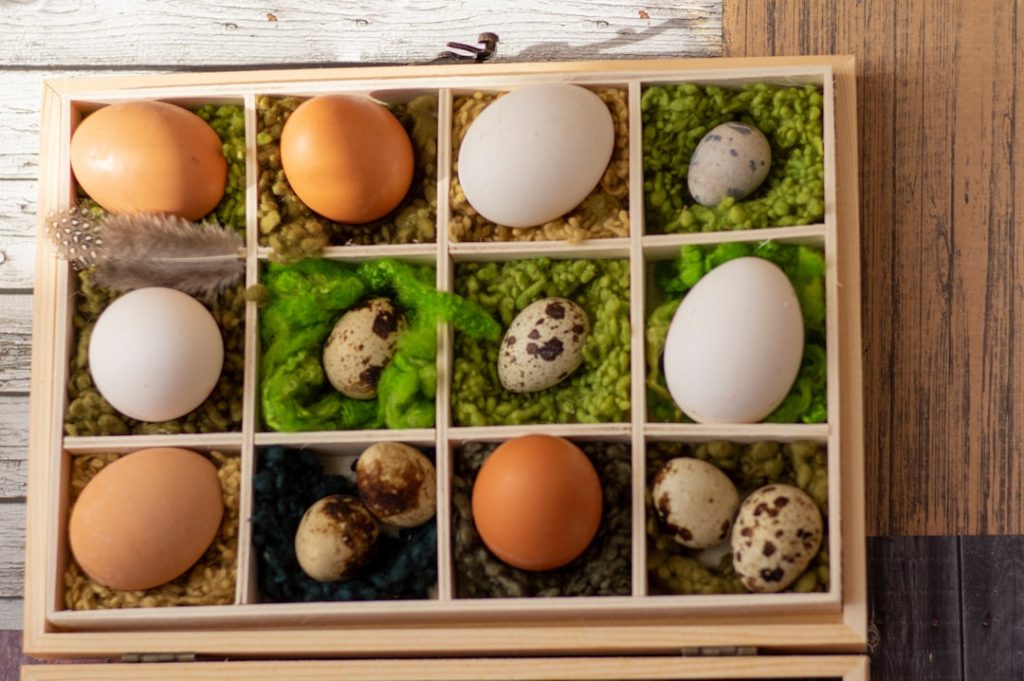Meat chickens, or broilers, are a specialized breed of chicken raised primarily for meat production. These birds are genetically selected for rapid growth and efficient feed conversion, typically reaching market weight in 6-8 weeks. This quick growth rate makes them popular among commercial farmers and small-scale producers alike.
Meat chickens are characterized by their fast development, high feed-to-meat conversion ratio, and tender, flavorful meat. They are a significant component of the global poultry industry and are consumed worldwide. Commercial meat chicken operations typically involve large-scale production in climate-controlled facilities with specialized diets to optimize growth.
However, backyard farmers and homesteaders can also raise meat chickens on a smaller scale. This practice allows individuals to produce their own food, potentially yielding high-quality, organic meat without the use of hormones or antibiotics commonly found in commercial poultry. Despite these benefits, raising meat chickens presents challenges, including determining the optimal slaughter age, managing the duration of care, and recognizing when the birds are ready for processing.
Table of Contents
- 1 The Ideal Age for Slaughtering Meat Chickens
- 2 Factors to Consider When Deciding How Long to Keep Meat Chickens
- 3 Signs that Meat Chickens are Ready for Slaughter
- 4 Benefits of Keeping Meat Chickens for Longer Periods
- 5 Risks of Keeping Meat Chickens for Longer Periods
- 6 Finding the Right Balance for Keeping Meat Chickens
- 7 FAQs
Key Takeaways
- Meat chickens are specifically bred for their meat production and have a shorter lifespan compared to egg-laying chickens.
- The ideal age for slaughtering meat chickens is around 6-8 weeks, when they reach their optimal size and weight for meat production.
- Factors to consider when deciding how long to keep meat chickens include the breed, growth rate, and intended market for the meat.
- Signs that meat chickens are ready for slaughter include reaching the desired weight, having fully developed feathers, and exhibiting good health and activity.
- Keeping meat chickens for longer periods can provide benefits such as larger meat yield and cost savings on feed, but it also comes with risks such as increased health issues and decreased meat quality.
The Ideal Age for Slaughtering Meat Chickens
Optimal Size and Flavor
The ideal age for slaughtering meat chickens is typically between 6-8 weeks of age. At this point, the chickens have reached their full size and weight, and their meat is tender and flavorful. Slaughtering the chickens at this age ensures that they have not become too tough or developed an undesirable texture.
Cost-Effective and Healthy
Additionally, younger chickens have a higher feed conversion ratio, meaning they require less feed to reach their full size, making them more cost-effective to raise. Slaughtering meat chickens at the ideal age also helps to prevent health issues that can arise as the chickens get older. As chickens age, they become more susceptible to diseases and health problems, which can impact the quality of their meat.
Consistent Supply of High-Quality Meat
By slaughtering the chickens at the optimal age, farmers can ensure that they are providing their customers with the highest quality meat possible. Additionally, slaughtering the chickens at the right age allows farmers to maintain a consistent supply of meat throughout the year, as they can stagger their flocks to ensure a continuous production cycle.
Factors to Consider When Deciding How Long to Keep Meat Chickens

When deciding how long to keep meat chickens before slaughtering them, there are several factors that farmers and homesteaders should consider. One of the most important factors is the breed of chicken being raised, as different breeds have different growth rates and ideal slaughter ages. Some breeds of meat chickens are specifically bred to reach their full size at a younger age, while others may take longer to mature.
Farmers should also consider the intended use of the meat chickens, as some may be raised for personal consumption while others may be sold to customers or at market. Another important factor to consider is the living conditions and care provided to the meat chickens. Chickens that are raised in optimal conditions with access to fresh air, clean water, and a balanced diet will generally grow faster and healthier than those raised in subpar conditions.
Additionally, farmers should consider the cost of feed and other resources required to raise the chickens to maturity, as keeping them for longer periods will incur additional expenses. Finally, farmers should consider market demand and pricing when deciding how long to keep meat chickens, as holding onto them for too long can result in decreased profitability.
Signs that Meat Chickens are Ready for Slaughter
There are several signs that indicate when meat chickens are ready for slaughter. One of the most obvious signs is their size and weight – when chickens have reached their full size and weight, they are typically ready for slaughter. Additionally, their feathers will be fully developed, and they will have a healthy appearance with bright eyes and clean feathers.
Another sign that meat chickens are ready for slaughter is their behavior – they will be active and alert, with a healthy appetite and normal movement. Farmers should also pay attention to the condition of the chickens’ legs and feet, as any signs of lameness or difficulty walking may indicate health issues that could impact the quality of their meat. Additionally, farmers should check the chickens’ overall health and look for any signs of illness or disease before slaughtering them.
It’s important to ensure that the chickens are in good health before slaughter to prevent any potential food safety issues. Finally, farmers should consider the market demand for meat chickens and plan their slaughter schedule accordingly to ensure that they can sell the meat at its freshest.
Benefits of Keeping Meat Chickens for Longer Periods
While slaughtering meat chickens at the ideal age is common practice, there are also benefits to keeping them for longer periods before slaughter. One of the main benefits is that older chickens will have more developed flavor and texture, resulting in a richer and more robust taste. This can be appealing to consumers who prefer a more mature and flavorful meat product.
Additionally, older chickens may have a higher fat content, which can enhance the juiciness and tenderness of the meat. Keeping meat chickens for longer periods can also provide farmers with a more sustainable production model. By allowing the chickens to grow for a longer period of time, farmers can maximize their investment in feed and resources by producing larger birds with more meat.
This can result in a higher yield of meat per chicken, increasing overall profitability. Additionally, keeping meat chickens for longer periods can help farmers meet market demand for larger birds or specialty products such as roasters or capons.
Risks of Keeping Meat Chickens for Longer Periods

Health Issues and Meat Quality
While there are benefits to keeping meat chickens for longer periods before slaughter, there are also risks that farmers should consider. One of the main risks is that older chickens may develop health issues or diseases that can impact the quality of their meat. As chickens age, they become more susceptible to a range of health problems, including respiratory issues, joint problems, and heart disease.
Increased Feed Costs
These health issues can result in lower quality meat or even render the birds unsuitable for consumption. Another risk of keeping meat chickens for longer periods is increased feed costs. Older chickens require more feed to maintain their weight and health as they continue to grow, which can significantly increase production costs.
Impact on Profitability
Additionally, older chickens may have a lower feed conversion ratio, meaning they require more feed to produce the same amount of meat as younger birds. This can impact overall profitability and make it more challenging for farmers to maintain a sustainable production model.
Finding the Right Balance for Keeping Meat Chickens
In conclusion, raising and slaughtering meat chickens requires careful consideration of several factors, including the ideal age for slaughter, how long to keep the chickens before slaughter, and recognizing signs that they are ready for slaughter. While there are benefits to both slaughtering meat chickens at the ideal age and keeping them for longer periods before slaughter, there are also risks that farmers should consider. Finding the right balance between these factors is essential for maintaining a sustainable and profitable production model.
Ultimately, farmers should consider market demand, breed characteristics, living conditions, and production costs when making decisions about raising and slaughtering meat chickens. By carefully weighing these factors and staying informed about best practices for raising poultry, farmers can ensure that they are providing high-quality meat products to consumers while maintaining a sustainable and profitable operation. Whether raising meat chickens on a commercial scale or as part of a small-scale homestead, finding the right balance is key to success in this important sector of agriculture.
If you’re considering raising meat chickens, you may also be interested in learning about the incubation period for goose eggs. Poultry Wizard has a helpful article on what is the incubation period for goose eggs that provides valuable information for anyone looking to expand their poultry farming endeavors. Understanding the process of hatching and raising geese can be a valuable addition to your knowledge as a poultry farmer.
FAQs
What are meat chickens?
Meat chickens, also known as broiler chickens, are specifically bred and raised for their meat. They are typically raised for a short period of time before being processed for consumption.
How long do you keep meat chickens before processing?
Meat chickens are typically kept for 6-8 weeks before they are ready for processing. This allows them to reach the desired weight and size for optimal meat production.
What factors can affect the length of time meat chickens are kept?
Factors such as the breed of the chicken, the quality of the feed, and the living conditions can all affect the length of time it takes for meat chickens to reach processing weight. Additionally, the specific requirements of the market or the preferences of the farmer may also play a role in determining how long meat chickens are kept before processing.
What is the average weight of meat chickens at processing time?
Meat chickens are typically processed when they reach an average weight of 4-6 pounds, depending on the specific requirements of the market or the preferences of the farmer.
Meet Walter, the feathered-friend fanatic of Florida! Nestled in the sunshine state, Walter struts through life with his feathered companions, clucking his way to happiness. With a coop that’s fancier than a five-star hotel, he’s the Don Juan of the chicken world. When he’s not teaching his hens to do the cha-cha, you’ll find him in a heated debate with his prized rooster, Sir Clucks-a-Lot. Walter’s poultry passion is no yolk; he’s the sunny-side-up guy you never knew you needed in your flock of friends!







